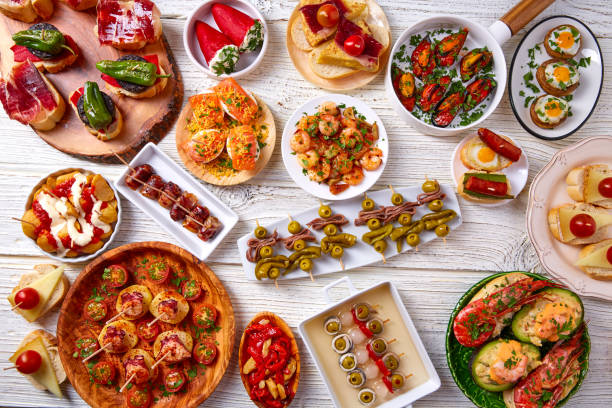Diving into the Rich Flavors of Spanish Tapas: A Culinary Journey
Spanish cuisine, known for its robust flavors and diverse ingredients, is a treasure trove of delicious meals. One of its most celebrated culinary traditions is tapas, a collection of small, flavorful dishes meant to be enjoyed with good company and a glass of fine Spanish wine. Let's explore the history, variety, and modern interpretations of this delightful Spanish culinary tradition.

The Origin of Tapas
Tapas holds a special place in Spanish food culture. The tradition of serving small bites with drinks dates back centuries. Some say it started as slices of bread or meat used as a cover (or ‘tapa’) for wine glasses to keep out flies. Others believe it was a decree by King Alfonso X, who after falling ill, had to eat small portions with his wine.
The Diversity of Tapas
Globally, tapas has come to denote any Spanish appetizer, but in Spain, each region has its unique tapas style. Andalusia is famous for its fried seafood, while in Basque country, ‘pintxos’ (bite-sized morsels served on bread) reign supreme. This regional diversity has led to an incredible variety of dishes, from simple olives and cheese to complex seafood concoctions.
Tapas in Modern Spanish Cuisine
Modern Spanish chefs have embraced tapas, adding their unique twists. They’re experimenting with ingredients and techniques, creating innovative tapas that challenge and delight the palate. Imagine a traditional patatas bravas reimagined with a foam aioli or a classic tortilla española served in a cocktail glass.
Tapas Beyond Spain
The popularity of tapas has spread worldwide, with restaurants globally offering ‘tapas-style’ dining. This sharing-friendly dining style encourages conversation and fosters a sense of community. The concept of small plates of food paired with drinks has also influenced other cuisines, leading to the creation of Italian ‘cicchetti’ or Greek ‘meze’.
Making Tapas at Home
Creating tapas at home can be a fun and rewarding culinary adventure. Start with simple dishes like albondigas (meatballs) or gambas al ajillo (garlic shrimp). As you get more comfortable, you can tackle more complex dishes like pulpo a la gallega (Galician octopus).
Tapas Tips and Facts:
- Tapas are typically served at room temperature.
- Tapas dining is a social event. Take your time, enjoy the food, and engage in conversation.
- Pair your tapas with Spanish wines. A crisp Albariño or a robust Rioja can elevate your tapas experience.
To conclude, tapas offer a unique way to experience Spanish cuisine. It’s not just about the food, but the whole experience - sharing delicious bites, savoring fine wines, and engaging in lively conversation. So the next time you’re looking to expand your culinary horizons, why not embark on a tapas adventure?




